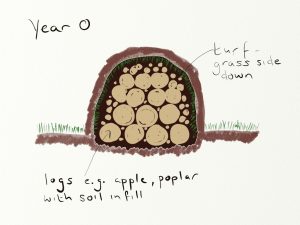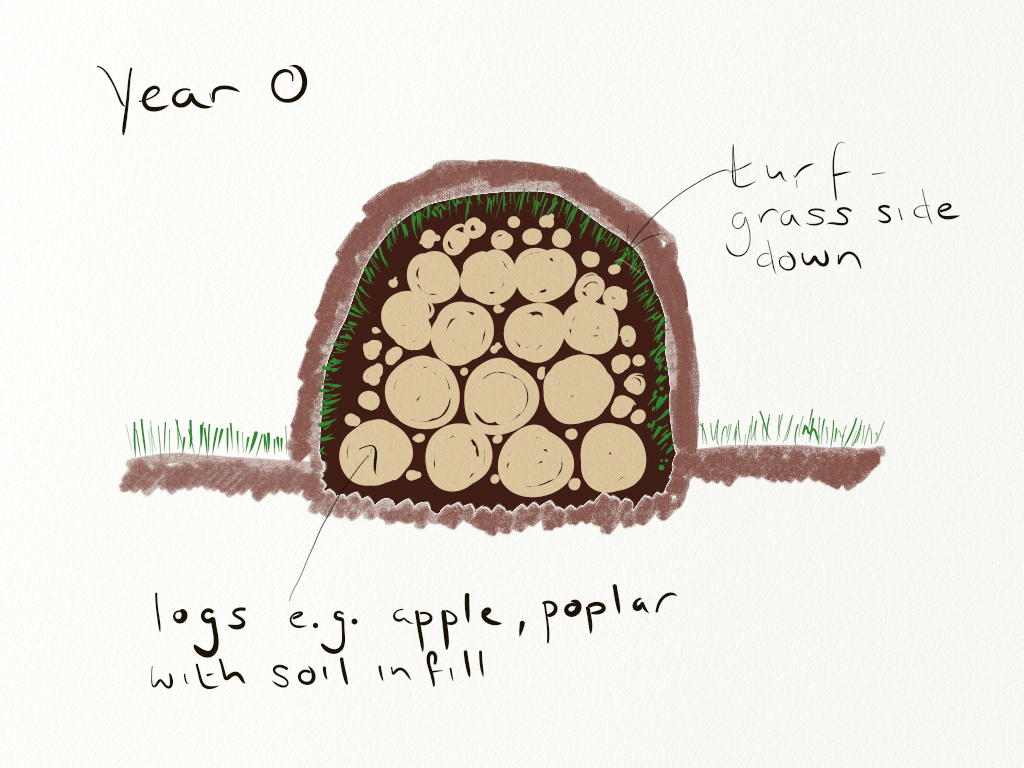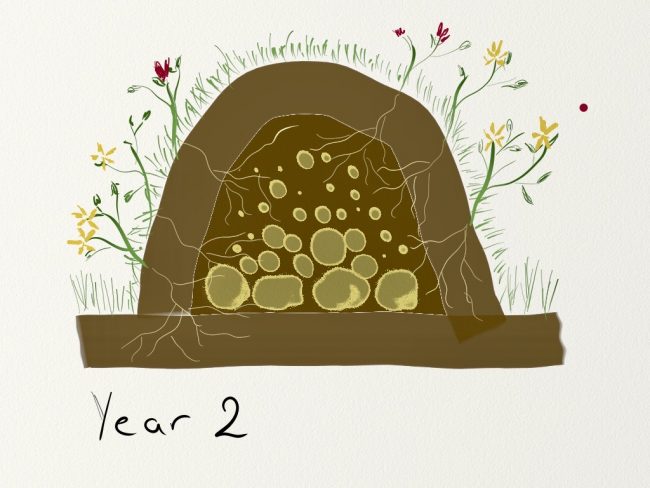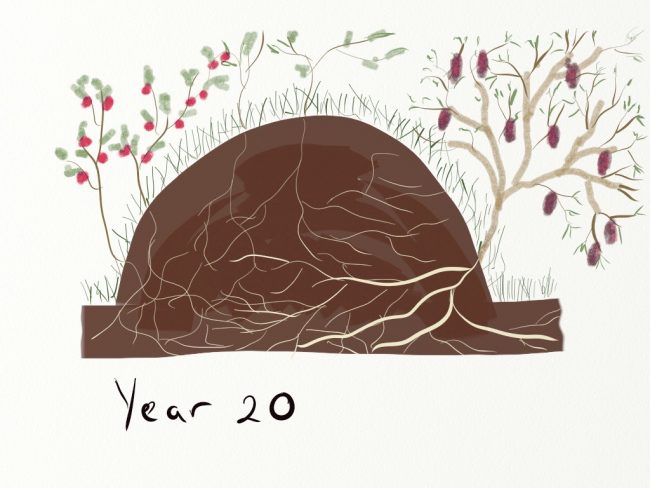Hugelkultur -another use for wood / wood trimmings.

In a woodland or indeed one’s garden, there are often bits of wood and trimmings lying around. Sometimes these can be useful in a woodburning stove or used to support peas & beans / vegetables but another use is in hugelkultur.
Hugelkultur or hugel beds are basically raised beds with a difference - they are filled with rotting wood and other biomass. They are simply packed with organic material, nutrients and air pockets. They can be an effective way of creating a productive area for growing fruits and vegetables in your garden / woodland. Instead of putting your wood offcuts, branches, leaves and grass clippings into bags for the ‘green collection’ or the compost heap, consider building a hugel bed.

Simply stack the logs, branches, leaves, lawn clippings, cardboard, and other ‘biomass’ that you have on top of the soil (or you can dig out a trench for a base). Then top the mound with some soil, and then if you have some spare turf - use that to help shape it but plant the turf upside down, and finally water. Ideally, the mound should be At least two feet feet high, preferably considerably more.
Over time, it will ‘shrink down’ as microbial activity begins, creating gaps / air pockets that help improve soil aeration. The composting process will also help warm the soil, possibly giving a longer growing season. The decaying wood material will enrich the soil by encouraging animal life (earthworms etc) and also help retain water - drought often checks the growth of plants. A hugel bed in a dry part of the garden or wood can help make your garden/ woodland more productive as all the organic material helps store water. It can be planted up with a wide variety of fruits and vegetables - and should provide produce through the growing season.

Most woods can be used in constructing a hugel bed, for example, alders, apple, aspen, birch, maple, oak, poplar, willow (but make sure it is dry / dead or you may end up with a sapling).

Some woods contain tannins and other substances that slow the decay process, for example, yew, pines, juniper, black walnut.
Using wood to increase the organic content of the soil is good in terms of carbon sequestration, improving soil fertility, water conservation and productivity.
Comments are closed for this post.
